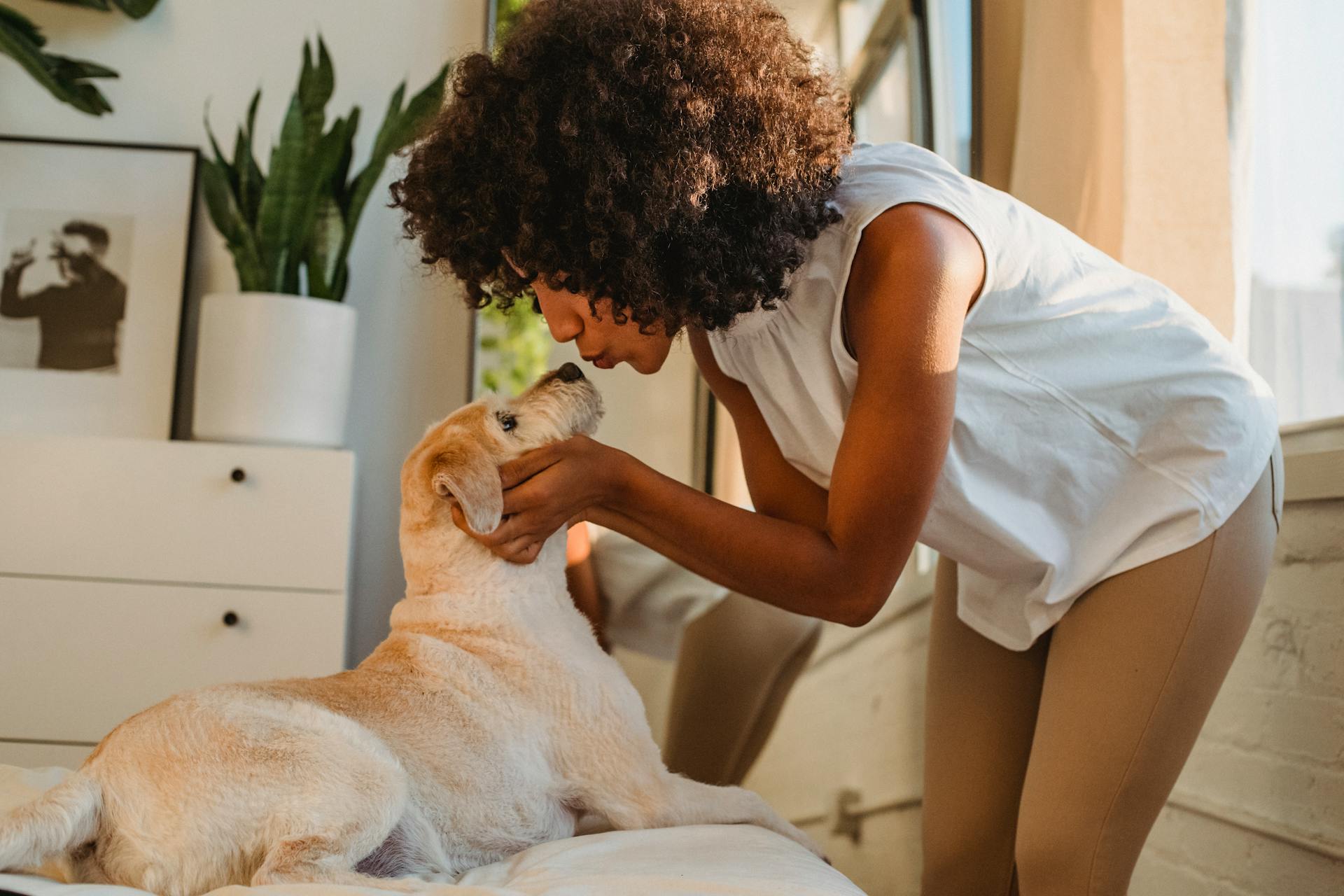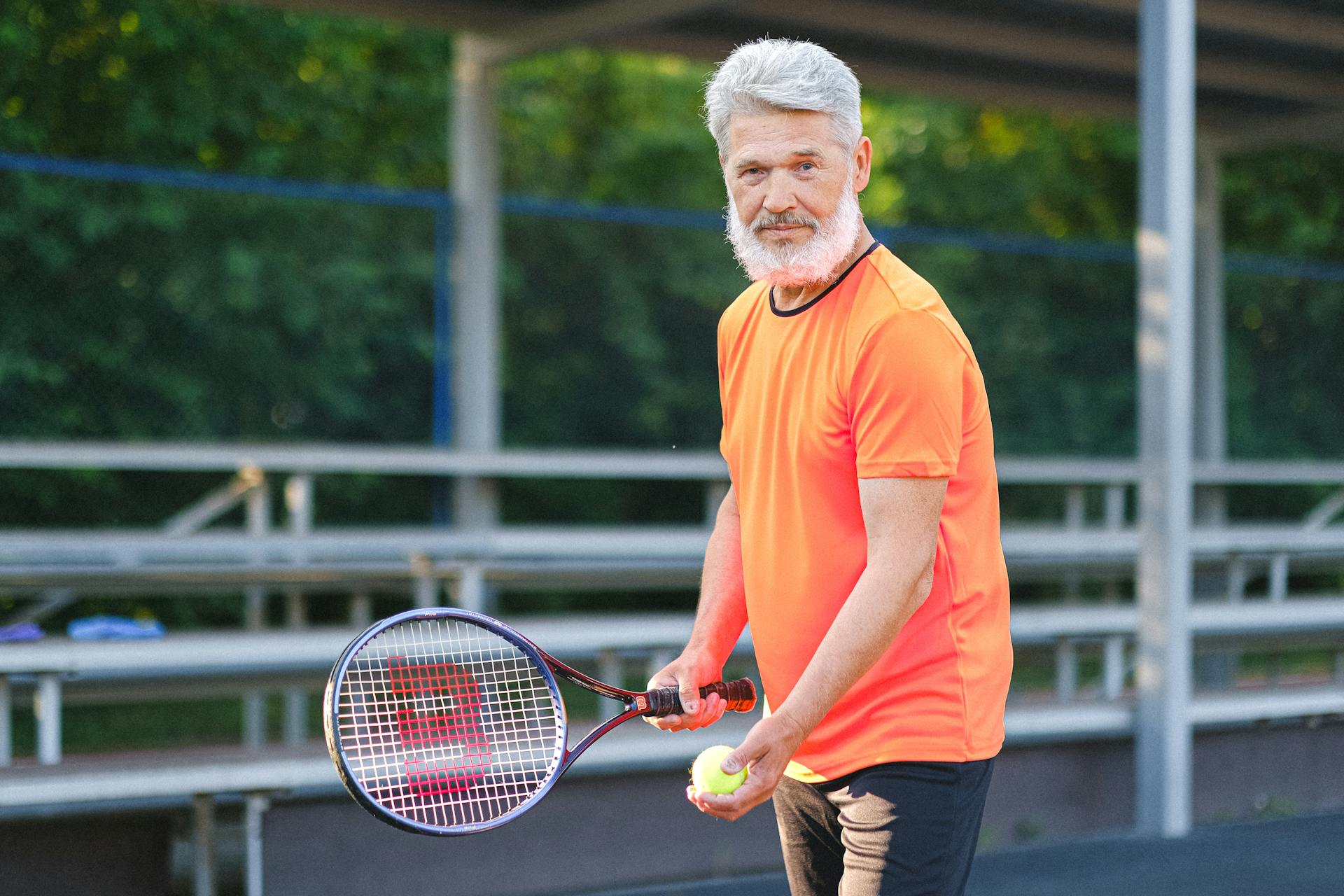
Training your dog is a journey that requires patience, consistency, and positive reinforcement. By using the right techniques, you can raise a well-adjusted and obedient dog that brings joy and companionship to your life.
Positive reinforcement training is a powerful tool that focuses on rewarding good behavior rather than punishing bad behavior. This approach has been shown to be more effective than punishment-based training methods, which can lead to fear and aggression in dogs.
Consistency is key when it comes to training your dog. Establishing a routine and sticking to it helps your dog understand what is expected of them and builds trust in your relationship.
You might like: Negative Reinforcement Dog Training
Getting Started
First, decide what kind of training you want for your dog. Do you want to teach basic obedience, agility, or something else? Knowing your goals will help you find the right trainer and training method.
Professional dog trainers teach a variety of skills, including basic obedience, behavioral modification, and trick training. They offer group classes, private lessons, or in-home training, and some even teach owners how to train their dogs themselves.
For another approach, see: Dog Training Basic Obedience Lesson Plan
Puppies as young as 7 to 8 weeks old can start learning basic obedience commands like "sit", "stay", and "down." However, professional dog training typically starts at 6 months old.
To leash train your dog, start by having them wear a leash inside the house while playing and during feeding time. This will help them associate the leash with positive experiences.
Consider the type of leash that's right for you and your dog. You can choose from standard nylon leashes, leather leashes, bungee leashes, hands-free leashes, long leashes, or double leashes.
Here are some common types of leashes and their characteristics:
- Standard nylon leash: 6 feet long, easy to clean, pairs well with other dog walking gear
- Leather leash: sturdy, stylish, but may be damaged if your dog chews on it
- Bungee leash: stretchy, beneficial for dogs that pull, but won't prevent pulling
- Hands-free leash: keeps your dog tethered to your waist, ideal for running or low-impact activities
- Long leash: 30 feet or more, great for recall training, but be prepared to rein in your dog
- Double leash: convenient for multiple dogs, but requires proper leash training
Basic Commands
Basic Commands are the building blocks of dog training. They provide structure and help you overcome common dog behavior problems.
Teaching your dog basic commands like "sit", "stay", "come", and "lie down" is essential for strong communication between you and your dog. These commands can be used in various situations, from basic obedience to advanced behavioral modification.
Here are some essential basic commands to get you started:
Remember, positive reinforcement is key when teaching your dog basic commands. Reward their good behavior with treats, praise, and affection to make the learning process enjoyable and effective.
Leash and Harness
Every dog needs to learn to walk on a leash, and using a harness is a great alternative to a collar, which can be irritating and even harmful when used for leashing purposes.
A loose leash walk teaches your dog not to pull or lunge when on the leash, making the experience more enjoyable for both you and your dog.
To introduce your dog to a harness for the first time, hold it up between your dog and a treat so they have to stick their head through the hole to get it.
Give them treats after you attach each buckle on the harness, this will help them associate the harness with positive experiences.
Intriguing read: The Perfect Walk Dog Training
If your dog is continuing to pull after you've consistently worked on leash training with them, consider using a front-clip harness that causes their body to pivot towards you when they pull.
Leashing your dog can keep them safe and out of trouble, and it's a legal requirement in most areas.
Readers also liked: Leash Training a Dog Not to Pull
Socialization
Socialization is a crucial part of dog training, and it's essential to do it right. Socialization means exposing your dog to new people, animals, and places to help them become confident and calm in new situations.
Socialized dogs are less likely to develop behavior problems and are generally more welcomed by others. This is because socialization helps prevent the development of fears and phobias.
To socialize your dog, start by exposing them to other pets on neutral territory. This means taking them to a park or a friend's house, rather than introducing them to another pet in your home or theirs.
A different take: Dog Socialisation Training
Vaccinate your dog before taking them to parks or group classes, as unvaccinated dogs can put others at risk. This will make it easier to socialize your dog and help them become more confident around other dogs.
Supervise all interactions between your dog and other pets or people, and read their body language for cues that they're getting anxious or angry. This will help you intervene before things escalate.
Here are some do's and don'ts to keep in mind:
By following these do's and don'ts, you can help your dog become a well-socialized and well-behaved member of your family.
Proofing and Troubleshooting
Proofing is the final step in training your dog, where you practice behaviors in various places with different levels of distraction to ensure they'll follow commands outside your home. This step is crucial to prevent behavior problems from cropping up.
Practice behaviors in a variety of places with different levels of distraction to ensure your dog's obedience extends beyond your living room. Without proofing, your dog may behave well at home but struggle in new environments.
Common dog behavior problems can arise even after reaching the final stages of training. Recognizing these issues can help you detect and address them before they get out of control.
Is Private Worth It?

Private dog training is worth it because it helps correct your dog's behavior, aggression, anxiety, and socialization skills in a timely and cost-effective manner. Common commands dogs learn quickly with professional training are to stay, heel, and roll over.
Teaching your dog to not jump or bite is a valuable aspect of private training. This can also help with socialization skills.
Private training can also teach your dog to stop barking, stay in the yard off-leash, and use a dog door.
Consider reading: Personal Dog Training
Drop It
The "drop it" command is a crucial one to teach your dog, but it's essential to use it wisely. If you rely exclusively on "drop it", you're teaching your dog they'll get rewarded for picking up objects and dropping them.
A strong "leave it" cue is necessary to prevent your dog from picking up things they shouldn't in the first place. This command should be used as a last resort, after a "leave it" command has failed.
Using "drop it" too often can lead to confusion and undermine your training efforts.
Consider reading: Leave It Dog Training
What is Proofing and Why Is It Important?
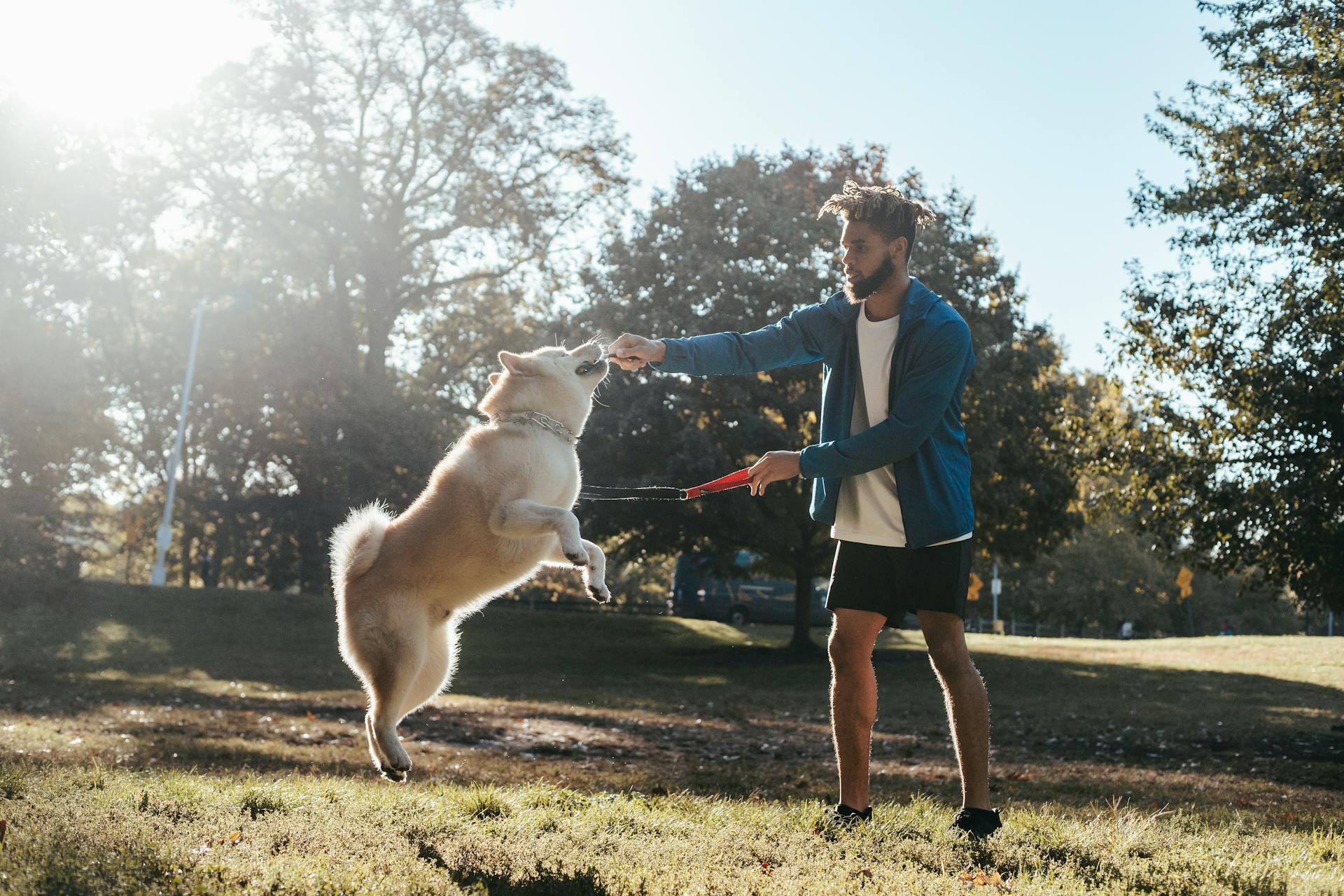
Proofing is the last step in training your dog to do any new behavior, and it's what helps them be obedient in all sorts of situations, not just at home.
Practice, practice, practice is key. Practice behaviors in a variety of places with different levels of distraction, and you'll find that your dog will behave well even when they're not in their comfort zone.
Recognize that just because you've reached the final stages of training, it doesn't mean that behavior problems won't crop up. Understanding potential behavior issues can help you detect and address them before things get out of control.
The goal of proofing is to train your dog to complete commands they learned at home in settings with more distractions. This could be a crowded city sidewalk, a park with dogs running around, or any other situation where your dog might be tempted to forget their training.
To proof your dog's behaviors, you'll need to use the training methods you used inside to train them over and over again in a wide variety of settings. This is what helps them learn to follow your commands in every situation.
Here are the four D's to keep in mind when generalizing: Distractions: Be aware of what's distracting your dog and try to minimize them.Diversity: Train your dog in different locations and with different levels of distraction.Degree: Gradually increase the difficulty of the training sessions.Duration: Train for longer periods of time to help your dog build endurance.
For more insights, see: Are Goldendoodles Easy to Train
AHS Enrollment Inquiry
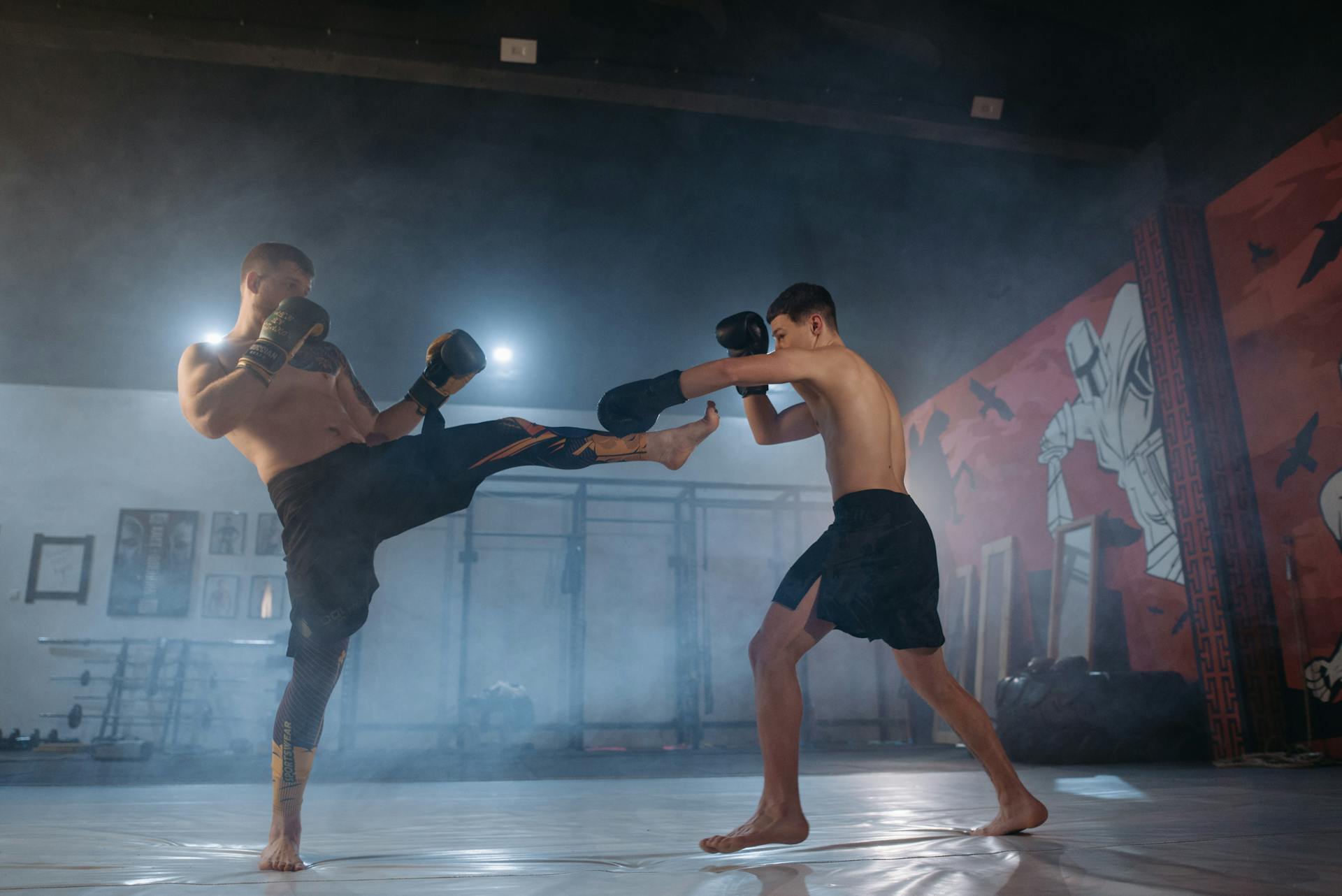
If you're interested in enrolling in AHS Training School, you can learn more about their behavior and specialty classes.
AHS offers a new adopter discount for community members who have recently adopted from them, which can be a great incentive to attend classes.
You can take advantage of this discount to learn more about training and troubleshooting with your new furry friend.
Take a look at this: Dog Training at Petco
House
House training can be a challenge, but with consistency and diligence, you can teach your dog to go potty outside. Housetraining is one of the first things you need to work on with your dog, and crate training can be a helpful part of the process.
Puppies need to do their business frequently, so make sure to give them plenty of potty breaks throughout the day. The more potty breaks you incorporate into your day, the fewer accidents you'll have to deal with.
Crate training can help with housebreaking, but it's not a substitute for proper training. If your dog is still having accidents in the house, it may be more than a simple housebreaking issue. Your dog might urinate out of excitement or to express submissive behavior.
Broaden your view: Dog Day Training
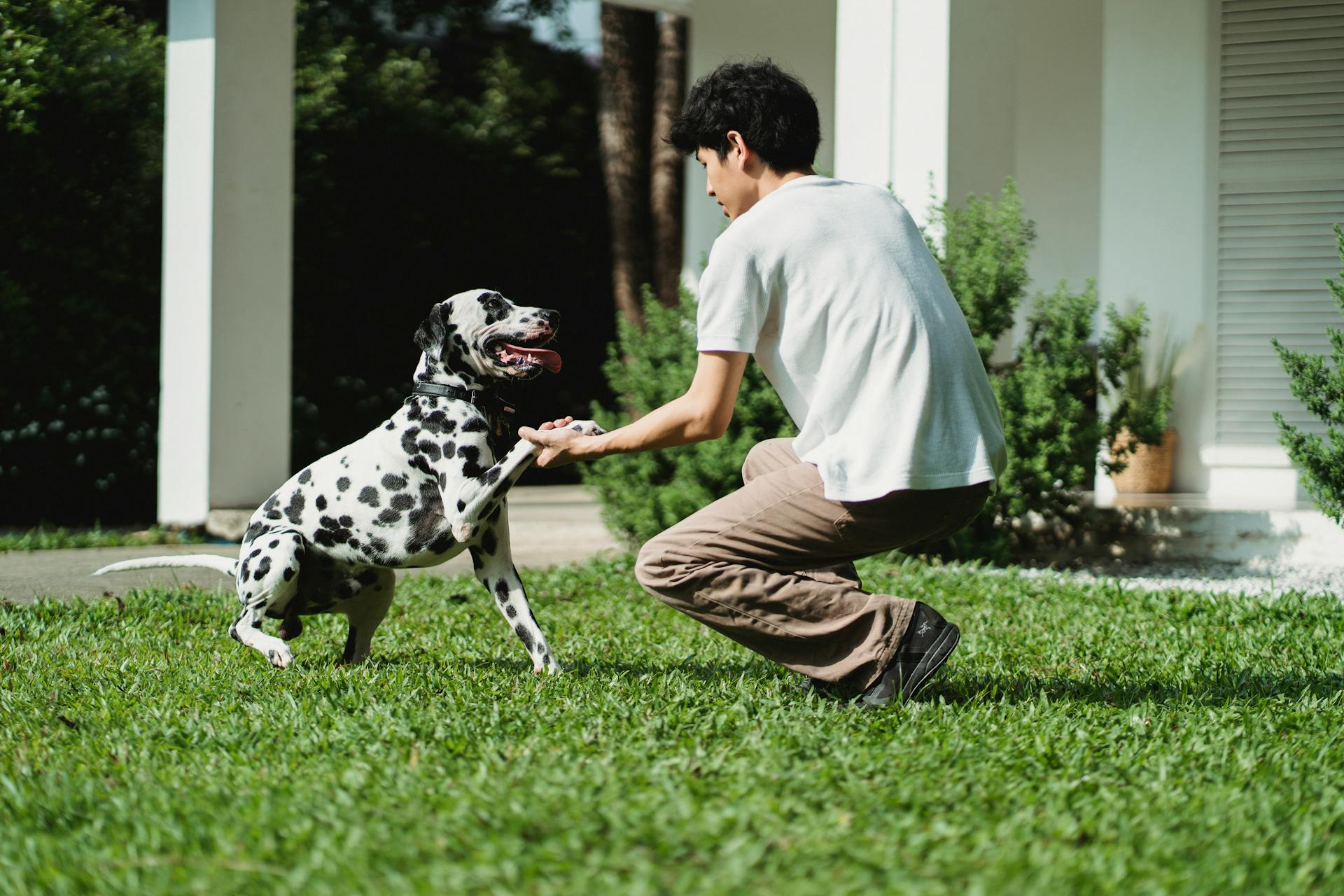
If your dog is still having accidents inside your home after being housebroken, consult your veterinarian to rule out health problems like UTIs or arthritis. Cleaning waste off the floor isn't the most glamorous task, but it's a necessary part of having a pet.
Here's a quick rundown of what you can do to help with housebreaking:
- Take your dog outside to the same spot each time to relieve themselves.
- Reward them with a treat and praise when they go outside.
- Don't punish them for accidents, as it will only instill a fear of going outside.
Behavior Problems
Behavior problems are a common challenge many dog owners face. Understanding these problems ahead of training can help you address them before they become bad habits.
Some common behavioral problems in dogs include barking, which is often a controllable behavior if you can identify the source of the excessive barking and incorporate a "quiet" command.
Training can help address these problems and prevent them from escalating into more serious issues.
Related reading: How to Use a Shock Collar to Stop Barking
Barking
Barking is a common obedience problem with dogs.
Some people may think it's just "dogs being dogs", but the behavior is actually controllable.
The key is to identify the source of the excessive barking and incorporate a "quiet" command when the situation arises.
This means recognizing triggers like boredom, anxiety, or excitement, and taking steps to address them.
By doing so, you can help your dog learn to bark less and be more calm.
Chewing
Chewing is a common behavior problem in dogs, resulting from separation anxiety, boredom, or teething. Torn-up shoes and pillows are not fun to come home to.
Cutting off access to chewable items is a good place to start. Providing plenty of chew toys can help redirect your dog's attention.
Separation anxiety can cause dogs to chew excessively when left alone. Boredom can also lead to chewing, especially if your dog isn't getting enough physical or mental stimulation.
You can help prevent chewing by removing tempting items from your dog's reach. This includes shoes, books, and anything else that might be appealing to chew on.
A unique perspective: Dog Diaper Training
Frequently Asked Questions
Which dog training course is best?
The best dog training course depends on your specific needs, with options ranging from budget-friendly to customizable and specialized for puppies or video series. For a comprehensive comparison, check out our list of top dog training courses.
What is the highest rated dog training certification?
The CCPDT certification is widely regarded as the gold standard in dog training, demonstrating mastery of humane and science-based practices. It's a mark of high professional distinction, recognized by thousands of dog training professionals worldwide.
What is the number one rule in dog training?
The number one rule in dog training is to let the dog choose its actions, as behavior is conditional and influenced by its environment. By allowing the dog to make choices, you can effectively teach and modify its behavior.
Sources
- https://www.thesprucepets.com/steps-to-train-your-dog-1118273
- https://homeguide.com/dog-training
- https://betterpet.com/dog-training-101-how-to-set-your-dog-up-for-success/
- https://www.theacademyofpetcareers.com/blog/best-dog-training-books/
- https://www.animalhumanesociety.org/resource/why-dog-training-important-both-you-and-your-dog
Featured Images: pexels.com
